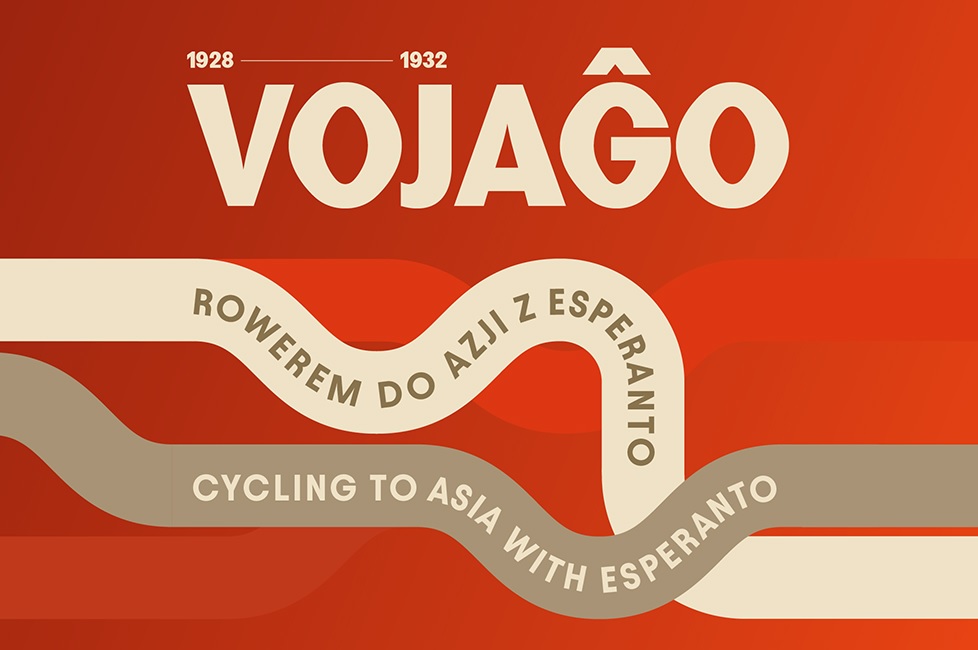VOJAĜO. Cycling to Asia with Esperanto (1928–1932)

A bicycle journey across two continents, thousands of documents rediscovered after decades, and the story of Esperanto that began in Warsaw. From 9 December, we invite you to visit the exhibition VOJAĜO. Cycling to Asia with Esperanto (1928–1932) – a tale of the extraordinary voyage undertaken by the young Esperantist Lucien Péraire and the effort to safeguard a movement whose legacy transcends national and cultural borders.
In 1928 an extraordinary journey began in Lyon. Lucien Péraire (1906–1997), a young carpenter and Esperanto speaker, set off on a round-the-world cycling expedition, the story of which remains almost unknown to this day. Travelling east through Europe, the Soviet Union, Japan, China and Southeast Asia to Indonesia, Lucien set out in search of an answer to a fundamental question: what causes wars and hostility between nations?
As he travelled, he observed, experienced, and documented the political, economic, and social conditions of the countries he passed through. The record of this extraordinary journey – thousands of items including diaries, shorthand notes, writings in French and Esperanto, photographs, postcards, correspondence and textiles – was only recently rediscovered in the basement of an association in Paris.
The uncertain fate of this collection highlights one of the most urgent challenges facing Esperanto heritage today. The Esperanto movement, born in Warsaw nearly 150 years ago, spread rapidly across every continent and into all areas of human activity: not only linguistics, but also literature, politics, religion, science and many other fields. By its very nature transnational and global, the movement never had universities or libraries capable of safeguarding its legacy. This unique heritage now faces the very real risk of being lost completely.
Péraire’s documentation was saved thanks to a digitalisation project funded by the Île-de-France Region. Yet much of the world’s Esperanto heritage remains at risk. In 2023, the National Library of Poland made a groundbreaking decision to take over from the World Esperanto Association in Rotterdam the Hodler Collection, comprising more than seven tonnes of unprocessed materials. Warsaw, the birthplace of Esperanto, is thus becoming one of the leading centres for the preservation of this unique expression of humanity’s shared experience.
The exhibition VOJAĜO. Cycling to Asia with Esperanto (1928–1932) unveils the Péraire Collection to the public for the very first time, offering a carefully curated selection of objects alongside documents held in the National Library of Poland. Together, they trace the evolution of the Esperanto movement around 1930, shedding light on its dynamic activity.
VOJAĜO. Cycling to Asia with Esperanto (1928–1932)
from 9 December 2025
National Library of Poland
al. Niepodległości 213, Warsaw
Curators: Pascal Dubourg Glatigny, Gabriela Skonieczna
Research collaboration: Sophie David, Régis Fournier, Agnieszka Mozer, Nicolas Raymond
Graphic design: Goodnews | Waldemar Koralewski, Paulina Wojdyna, Justyna Radziej